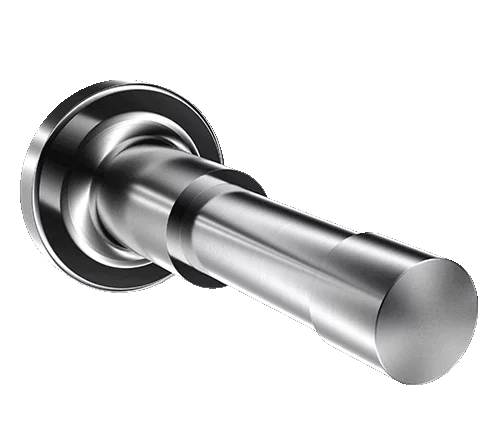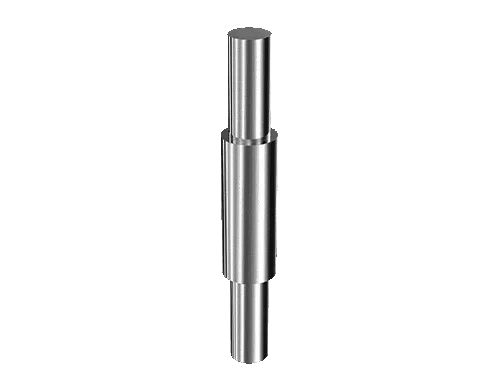Shandong Qilu lndustrial Co.,Ltd.
Exploring Different Types of Shaft Forgings and Their Applications
Introduction

Shaft forgings are critical components in various industries, providing robust and reliable solutions for machinery and equipment. This blog delves into the intricacies of shaft forgings, exploring their types, manufacturing processes, applications across different sectors, and key considerations for selection.
Types of Shaft Forgings
Open-Die Forgings
Open-die forging is a versatile method where metal is shaped between flat dies. This process allows for flexibility in the size and shape of shaft forgings, making it suitable for creating large, custom-shaped components. The open-die forging technique enhances the structural integrity of shafts by aligning the grain flow to follow the contours of the final shape. It is commonly used for producing shafts used in heavy machinery, such as crankshafts and drive shafts for industrial applications.
Closed-Die Forgings
Closed-die forging, also known as impression-die forging, involves shaping metal within a set of dies that contain a precut profile of the desired shaft. This method provides precise control over the dimensions and surface finish of the forged shafts. Closed-die forging is preferred for high-volume production of standardized shafts used in automotive, aerospace, and oil & gas industries. It ensures consistency in shape and mechanical properties, making it ideal for applications where reliability and performance are critical.
Upset Forgings
Upset forging is a process that increases the diameter of the metal by compressing its length. This technique is used to enhance the strength and durability of shaft forgings, particularly in applications that require components to withstand heavy loads and intense operational conditions. Upset forging creates shafts with a refined grain structure, which improves resistance to fatigue and enhances overall mechanical properties. It is commonly employed in manufacturing axles, gears, and other components where toughness and resilience are paramount.
Press Forgings
Press forging utilizes either mechanical or hydraulic presses to shape metal into shafts with high accuracy and consistency. This method is suitable for forging shafts with complex geometries or intricate details that require precise control over the forging process. Press forging enhances the material’s strength and density by compressing it uniformly, resulting in shaft forgings that exhibit superior mechanical properties and dimensional stability. It is extensively used in industries such as aerospace and power generation for producing turbine shafts and other critical components that demand high reliability and performance.
Rolled Ring Forgings
Rolled ring forging involves shaping metal into seamless ring-shaped shafts through the process of rolling and compressing a circular preform. This method produces shaft forgings with excellent grain structure and mechanical properties, making them highly suitable for applications requiring superior strength and resistance to fatigue. Rolled ring forgings are commonly used in the production of shafts for heavy-duty machinery, such as generator rotors and gear shafts in the power generation and mining industries. The seamless nature of rolled ring forgings minimizes material waste and allows for the creation of large-diameter shafts that are both strong and lightweight.
Applications of Shaft Forgings
Shaft forgings find extensive applications across various industries due to their durability, strength, and reliability. Here are some key applications:
| Industry | Application of Shaft Forgings |
|---|---|
| Automotive | Crankshafts, axle shafts, transmission shafts |
| Aerospace | Turbine shafts, landing gear components |
| Oil & Gas | Pump shafts, drill collars, valve components |
| Power Generation | Turbine rotor shafts, generator shafts |
| Construction | Crane shafts, excavator arms, lifting mechanisms |
Manufacturing Process of Shaft Forgings
The manufacturing process of shaft forgings involves several critical steps to ensure the quality and performance of the final components:
- Material Selection: Choosing the appropriate metal alloy based on mechanical properties, corrosion resistance, and specific application requirements.
- Heating: Heating the metal to a precise temperature range suitable for forging, typically above the recrystallization temperature, to enhance plasticity and facilitate deformation.
- Forging: Using the selected forging technique (open-die, closed-die, upset, press, or rolled ring forging) to shape the heated metal into the desired shaft form. Each forging method offers unique advantages in terms of dimensional control, material properties, and production efficiency.
- Heat Treatment: Subjecting the forged shaft to heat treatment processes such as quenching and tempering to achieve the desired combination of hardness, toughness, and strength. Heat treatment helps refine the microstructure of the metal and relieve internal stresses induced during forging, improving the overall mechanical properties and performance of the shaft forgings.
- Machining: Precision machining operations, such as turning, milling, and grinding, are performed to achieve final dimensions, surface finish, and tolerance requirements. Machining ensures that the forged shafts meet exacting specifications and can be seamlessly integrated into assemblies or systems.
Key Considerations in Choosing Shaft Forgings

When selecting shaft forgings for specific applications, several factors should be considered to ensure optimal performance, reliability, and cost-effectiveness:
- Material Compatibility: The chosen forging material must be compatible with the operational environment, offering sufficient strength, corrosion resistance, and thermal stability.
- Dimensional Accuracy: Precision in forging and machining processes is crucial to meet tight dimensional tolerances and ensure seamless integration with other components or assemblies.
- Load Capacity: Shaft forgings should be designed and manufactured to withstand anticipated loads, stresses, and operating conditions without premature failure or deformation.
- Surface Finish and Quality: High-quality surface finish and integrity are essential to minimize wear, friction, and potential failure points in critical applications.
- Cost and Lead Time: Consideration of initial manufacturing costs, tooling expenses, and lead times is important to balance performance requirements with budget constraints and project timelines.
Conclusion
Shaft forgings are indispensable components in various industries, providing essential functionality and reliability in machinery and equipment applications. Understanding the different types of shaft forgings, their manufacturing processes, applications across industries, and key selection criteria helps engineers, designers, and procurement professionals make informed decisions when specifying components for critical applications. By choosing the right shaft forgings, manufacturers can enhance the performance, longevity, and efficiency of their products, ultimately driving innovation and competitiveness in the global marketplace.
FAQ
Q: What are the advantages of using shaft forgings over other manufacturing methods?
A: Shaft forgings offer superior strength, better fatigue resistance, and enhanced structural integrity compared to castings or weldments.
Q: How can I ensure the quality of shaft forgings?
A: Quality can be assured by selecting reputable forging suppliers, specifying material requirements, and conducting rigorous inspections during production.
Q: Are shaft forgings cost-effective for small-scale production?
A: While initial setup costs may be higher, shaft forgings often provide long-term cost savings due to reduced maintenance and longer service life.
